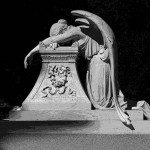A recent piece I wrote on hell was inspired, in part, by the story of 23 Minutes in Hell, an account from a gentleman named Bill Wiese of a nighttime experience in which, he believed, he was permitted to experience hell for a short period of time in order to return to the land of the living and tell everyone that hell is for real. MY own post was not a careful exegetical treatment of the issue of damnation, but a description of a personal struggle between the vision of the afterlife I have inherited from my evangelical upbringing and my own scripture-shaped intuitions of what it means to call God loving.
In this guest post, Hank Hanegraaff asks an important and related question: What are we to make of these near-death experience accounts in the first place? I’m exceedingly grateful to Mr Hanegraaff — the famed “Bible Answer Man” and author of a new book on the afterlife — for this guest post:
*
What’s Up with Near-Death Experiences?
By Hank Hanegraaff
In 2006 real estate broker Bill Wiese became a New York Times best-selling author with the publication of 23 Minutes in Hell. During his alleged out-of-body experience, Wiese uncovered a wealth of brand new information regarding the hellish side of afterlife, including temperature (300 degrees/zero humidity); location (center of the earth); reptilian-looking demons (some in excess of fifteen feet tall) who rule over and torture humans; rats the size of dogs and snakes as big as trains.
The flip side of the afterlife hit the headlines with the 2010 publishing phenomenon Heaven Is for Real: A Little Boy’s Astounding Story of His Trip to Heaven and Back. In it, Wesleyan pastor Todd Burpo tells of how his son Colton endured the equivalent of a near-death experience. Speaking “with the simple conviction of an eyewitness,” Colton revealed a heaven with “jeweled gates, shining rivers, and streets of gold”; a God with blue eyes, yellow hair, and huge wings; a Jesus with sea-green-bluish eyes, brown hair, no wings, but with a rainbow colored horse; and a Holy Spirit who is bluish but hard to see.
It wasn’t until 2012, however, that the mother of all near-death experiences emerged. “As arrogant as that might sound,” writes Dr. Eben Alexander in his mega-bestseller Proof of Heaven: A Neurosurgeon’s Journey into the Afterlife, mine was “a technically near-impeccable near-death experience, perhaps one of the most convincing such cases in modern history.” Through it he grasped the essence of all religion and the single most important truth in the universe, namely, unconditional love. Says Alexander: “You are loved and cherished, dearly, forever. You have nothing to fear. There is nothing you can do wrong.”
Though novel, near-death experiences are hardly new. During medieval times stories of trips to heaven and hell were a potent means by which unbelievers were converted and believers convinced to stick to the straight and narrow. Still, it wasn’t until 1975 that the moniker near-death experience (NDE) was coined by the occult parapsychologist Raymond Moody in the run-away best-seller Life After Life. Since then the endless stream of stories concerning subjective experiences occurring during a state of unconsciousness brought on by a medical crisis, such as an accident, suicide attempt, or cardiac arrest, have flooded the market. Precipitating the question, “What’s up with near-death experiences?”
First, we should note that the subjective recollections of near-death experiencers are wildly divergent and irreconcilable. Wiese’s notion of reptilian-looking demons commissioned to torture humans as care-takers of hell hardly squares with Alexander’s version of an afterlife in which unconditional love reigns supreme. Both can be wrong. But both can’t be right. Not only so, but the implications of such subjective predilections are profound. If Wiese is right the biblical authors are wrong. One may find demons as caretakers of hell in medieval tomes but never in Scripture. Conversely, if Alexander is right, Hitler merely dies in the comforting arms of his mistress with no eternal consequences. Such is no doubt solace for modern-day killers. After murdering his mother, twenty children, and six adults in the Sandy Hook Elementary School massacre in Connecticut, Adam Lanza blissfully soared off on what Alexander has romanticized as “the wing of a butterfly.”
Furthermore, worthy of note is the subjective specter of hyperliteralism. As such, it is not surprising for heavenly travelers to return from the afterlife with tales of “a great domed hall” (Mary Neal, To Heaven and Back), “streets of gold” (Don Piper, 90 Minutes in Heaven), and “pure, white angels with fantastic wings,” green demons with long fingernails and hair made of fire, and an earless devil, replete with three heads, a nasty nose, and moldy teeth (Alex Malarkey, The Boy Who Came Back from Heaven). Such exacting literalism has become pandemic. For example, it is not uncommon to see heaven described as a translucent cube measuring fifteen hundred miles in each direction. (One wonders if, by the same interpretive method, the present earth is set on pillars. After all, does not the Bible say that God “shakes the earth from its place and makes its pillars tremble?”) Small wonder then that terrestrial travelers return from near-death experiences with stories of pearly gates, brightly colored horses, and a Holy Spirit that is, well, “kind of blue.”
Finally, while near-death experiencers seem convinced that their particular version of the afterlife is the real McCoy, in reality natural explanations might actually be far more realistic. Psycho-active drugs ingested during a medical crisis can cause experiences strikingly similar to NDEs. Physiological factors, such as oxygen deprivation and the release of endorphins may play a role in NDEs as well. In her book, Dying to Live: Near-Death Experiences, Dr. Susan Blackmore argues that a lack of oxygen in the brain can trigger both autoscopic and transcendental episodes in which NDErs leave their bodies and/or move through dark tunnels in route to being embraced by the light. Moreover, psychological factors, including fantasy proneness, may also play a role in near-death experiences. Statistically, one out of every twelve Americans is predisposed to creating a fantasy out of thin air and then believing it to be true.
Considered collectively, psychopharmacological, physiological, and psychological explanations provide a compelling naturalistic rationale for near-death experiences. But a word of caution is in order. Naturalistic explanations assume that consciousness is merely a function of the physical brain. However we can be certain that this is not the case in that the mind and brain have different properties. As aptly noted by Drs. J. P. Moreland and Gary Habermas (Beyond Death: Exploring the Evidence for Immortality), “the subjective texture of our conscious mental experiences—the feeling of pain, the experience of sound, the awareness of color—is different from anything that is simply physical. If the world were only made of matter these subjective aspects of consciousness would not exist. But they do exist! So there must be more to the world than matter.” Indeed, if we are merely material, libertarian freedom (freedom of the will) does not exist. Instead we are fatalistically relegated to a world in which everything is a function of factors such as brain chemistry and genetics. Reason itself is reduced to the status of conditioned reflex. Moreover, the very concept of love is rendered meaningless.
In sum, purely naturalistic explanations may account for autoscopic and transcendental episodes, but what they cannot account for is consciousness. Despite the fact that near-death experiences are wildly divergent and dangerously subjective, they nonetheless serve to highlight the reality of consciousness—something Dr. Alexander should have comprehended long before flying off on the wings of a mythological butterfly.
*
 Hank Hanegraaff is president of the Christian Research Institute and host of the Bible Answer Man broadcast heard daily throughout the United States and Canada via radio, satellite radio Sirius-XM 131, and the Internet at Equip.org. Hank is the author of many books including the recently released AfterLife: What You Need to Know about Heaven, the Hereafter, and Near Death Experiences (Worthy Publishing, 2013).
Hank Hanegraaff is president of the Christian Research Institute and host of the Bible Answer Man broadcast heard daily throughout the United States and Canada via radio, satellite radio Sirius-XM 131, and the Internet at Equip.org. Hank is the author of many books including the recently released AfterLife: What You Need to Know about Heaven, the Hereafter, and Near Death Experiences (Worthy Publishing, 2013).











